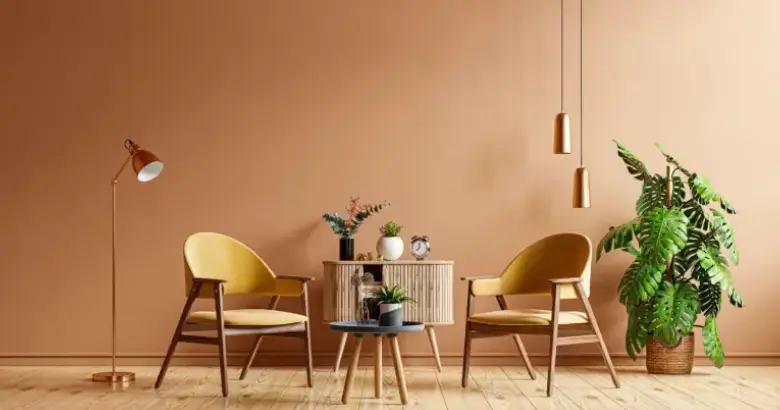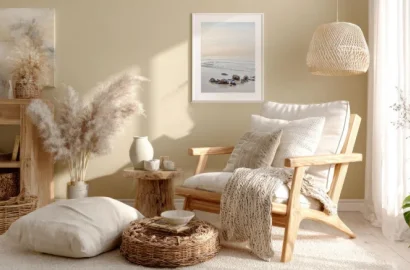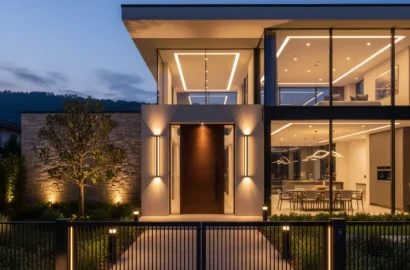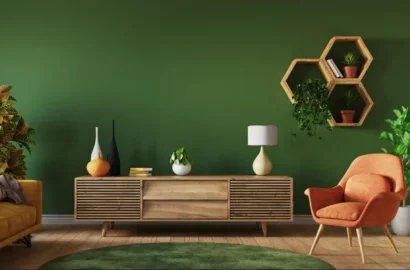How can you make your home more sustainable in 2025? Check out these 10 ideas for eco-friendly furniture to revamp your home without sacrificing the environment
Are you looking to make more sustainable interior design choices for your home? As the push for eco-conscious living grows stronger, many of us are rethinking our furniture purchases, aiming to reduce our environmental impact and support more sustainable solutions.
If this sounds like you, read on.
In this article, we’ve compiled a list of 10 eco-friendly home furniture solutions that prioritize sustainability and support a more circular economy. From non-toxic materials to upcycled objects, we’ve prioritized items that are functional, aesthetically appealing, and, most importantly, kind to the planet. By the end, you’ll be brimming with ideas about how you can curate a more sustainable interior design for your home without sacrificing the pieces you love.
Contents:
- The role of sustainability in home interior design
- What do we mean by eco-friendly furniture?
- 10 Eco-friendly furniture ideas for your home
- 3 Eco-friendly furniture tips and tricks
- Conclusion
The role of sustainability in home interior design
The pursuit by individuals to adopt more sustainable lifestyles has seen a noticeable surge in recent years, with consumers more aware than ever of the importance of their contribution to global efforts to mitigate climate change. In home interior design, we are seeing a growing trend towards sustainably sourced products, natural materials, recycling, upcycling, non-toxic products, second-hand goods, and non-animal products, as furniture producers seek to meet the demand from customers for products that make less of a negative impact on the natural world.
While materials play a key role in sustainable interior design, the approach encompasses other important components, too. These include, among others:
- Where and how products are sourced from
- How they have been made (and by whom)
- The toxicity of finishes
- The longevity of products
By taking all of these elements into account when designing and furnishing their homes, homeowners can significantly reduce negative impacts on the planet and support processes and companies that are enabling a more sustainable world.
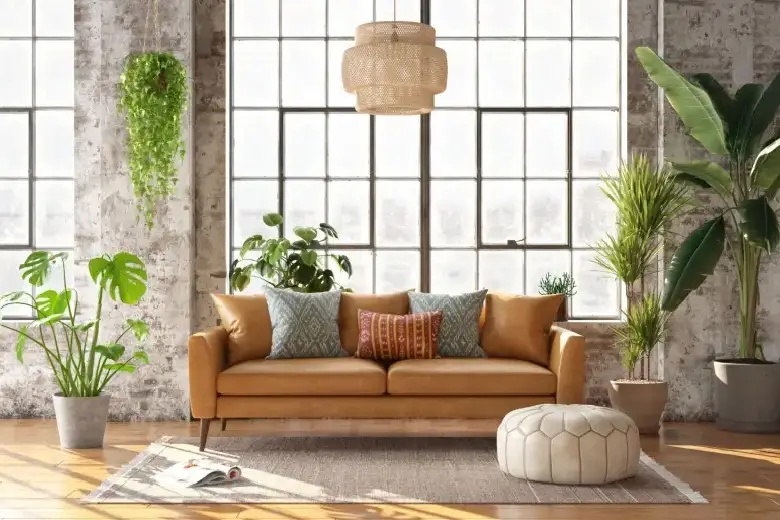
What do we mean by eco-friendly furniture?
Eco-friendly furniture is a phrase we are hearing more frequently in the world of home interior design. Companies are also seeking to design products that meet growing customer demand for furniture and accessories that do not negatively impact the environment.
The term “eco-friendly”, however, comprises a range of ideas, processes, approaches, and beliefs. It might refer to using sustainable materials, reducing waste, conserving resources, or ensuring products can be recycled or repurposed when no longer in use. Durability is another consideration, as goods that last longer need replacing less frequently than those not built to last.
Finally, how goods are created, where, and by whom is also valued by advocates of eco-friendly furniture production. From fair labor conditions and the use of local materials to ethical manufacturing practices and low carbon footprints, customers need to weigh a wide range of factors when deciding whether a piece of furniture adheres to their own sustainability and eco-friendly values. While some items will invariably tick all of the boxes, there will be many others for which the customer will need to decide which sustainability requirements are the most important to them before making a purchasing decision.
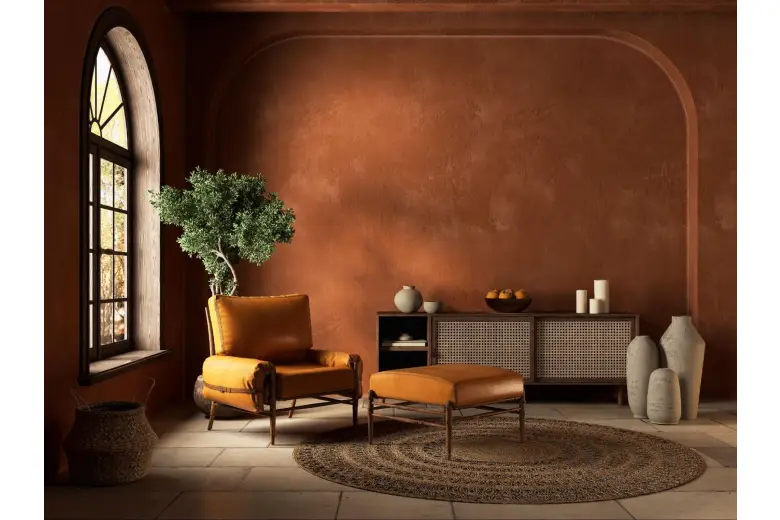
10 Eco-friendly furniture ideas for your home
Discover ten trending furniture solutions that look great in your home without sacrificing sustainability in our comprehensive list.
1. Bamboo dining table
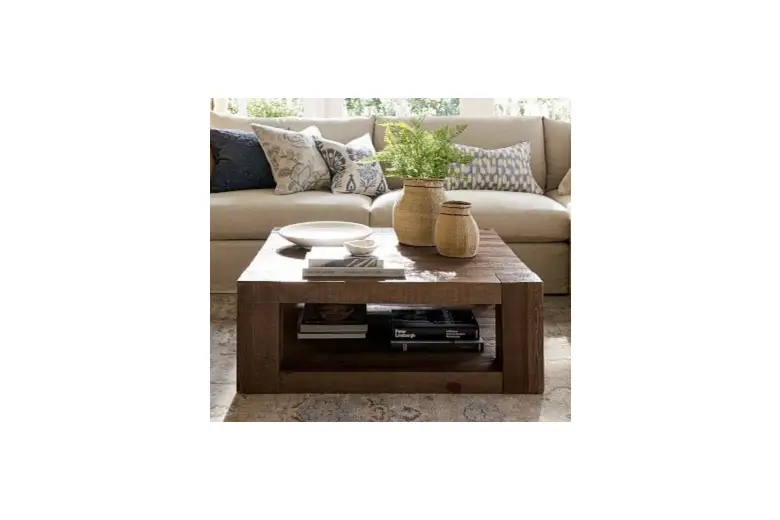
Bamboo is an increasingly popular material for furniture and homeware, thanks to its durability, resistance to moisture, and sustainability. As a renewable resource, bamboo offers an ethically produced alternative to wood or plastic, making it ideal for tables, chairs, desks, and shelving. When it comes to your home’s interior design style, bamboo is relatively versatile. Whether your look is farmhouse rustic or classic contemporary, the natural grain of the material complements a range of aesthetics. In your dining room, a bamboo dining table brings sophistication and elegance to the space due to its natural grain and delicate sheen that reflects light and makes the space appear lighter and larger. The material is robust and easy to maintain, too, making it perfect for busy households.
2. Reclaimed wood coffee table

As the focal point of the living room, your coffee table choice needs careful consideration. A coffee table made from reclaimed wood provides a stylish and sustainable style solution that brings the whole room together. Reclaimed wood is the name given to wood that is sourced from factories, boats, old farm buildings, or other structures that are no longer in use. By choosing reclaimed wood for your furniture, the demand for new timber from forests is lowered, supporting forest conservation efforts. Landfill waste is also reduced, as used wood is repurposed to create original and striking furniture pieces instead. The unique history of each piece, seen in its weathered texture, nail holes, and unusual grain patterns, gives your coffee table a truly original and warm appearance that adapts to industrial, rustic, modern, and traditional interior design styles.
3. FSC-certified wooden chair
FSC-certified wood comes from forests cared for in a way that preserves biological diversity and supports the lives of local people by adhering to strict environmental, social, and economic requirements. By choosing a wooden chair made from FSC-certified wood, homeowners can be sure they are supporting conservation efforts, reducing their carbon footprint, and contributing to a sustainable economy. For a wooden chair, homeowners have a range of FSC-certified wood to choose from, such as Ash, Beech, Hard Maple, or Red Oak, all with their own unique grains, hues, and textures. When choosing wood, it would be advisable to select wood from trees that are local to your country to reduce transportation, further minimizing your environmental impact.
4. Cork lounge chair
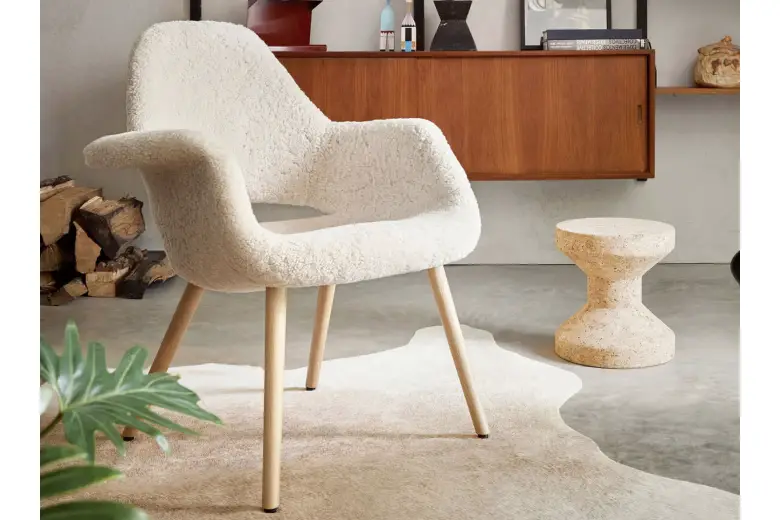
Boasting a lower carbon footprint than plastic or metal, cork is becoming a popular furniture material for homeowners looking for sustainable interior design solutions. This natural material comes from the bark of cork oak trees, meaning no trees need to be cut down to use it. With bark regenerating every decade or so, this is a truly eco-friendly material that is durable, flexible, and naturally anti-allergenic, too. Cork is a great choice for a lounge chair as the material is warm, soft, and slightly springy, contrasting against colder and harder materials like wood and metal. Thanks to its subtly textured surface, you can enjoy a niche piece that ties the room together with unique, natural charm.
5. Upcycled wooden bookshelf
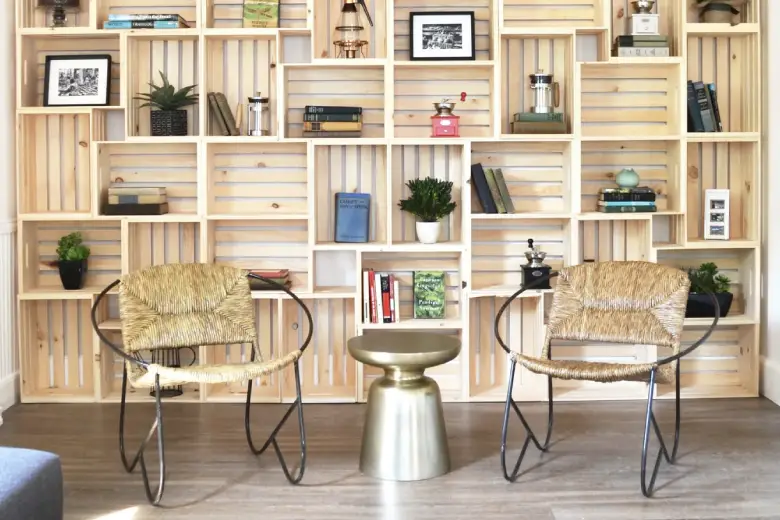
Upcycling refers to reusing discarded objects or materials in a way that produces a product of higher quality or value than the original. It’s becoming a huge trend in interior design as it injects originality into a room, helps homeowners to reflect their personality in their surroundings, and offers an environmentally sound approach to refreshing or redesigning rooms. When you do it yourself, it can also be a fun project that produces tangible and rewarding results. How you create your upcycled wooden bookshelf is up to you, but some ideas you might want to consider include:
- Painting reclaimed pallets and stacking them on top of each other
- Repurposing an old wooden ladder and leaning it against a wall
- Securing stained wine crates to the wall
- Recycling the wood of an old window frame
6. Hemp fabric curtains

Derived from the stems of the cannabis plant, hemp has been used for thousands of years for clothing, rope, sails, and even paper. The linen-like fabric is a sustainable alternative to both manmade and natural fabrics for a number of reasons:
- The plant’s deep roots and canopy of leaves naturally prevent soil erosion
- It doesn’t need much water to grow
- It requires fewer chemical pesticides to be successfully grown at scale, as it naturally repels pests
- It encourages biodiversity when grown organically and as a rotation crop
- It provides highly efficient carbon storage
Hemp is an ideal fabric for curtains as it is not only extremely durable and strong but also brings a rustic, natural look to any room with its simple, plain weave. Hemp is also naturally hypoallergenic, fire-retardant, and moisture resistant, making it a safe and reliable option for whichever room you use it in.
7. Organic cotton cushion covers
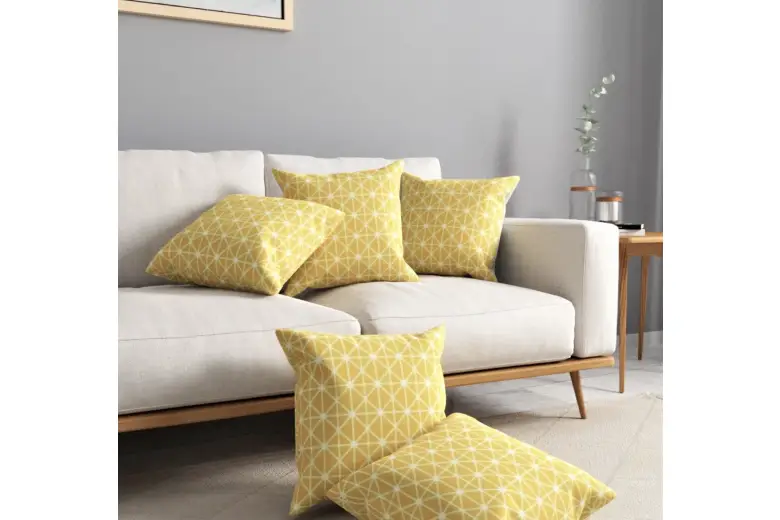
Organic cotton remains the most popular and, arguably, the most sustainable fabric choice for eco-friendly households. Unlike polyester materials that shed microplastics and conventional cotton that requires the use of harmful chemicals in its production, organic cotton promotes more sustainable and ethical farm practices and naturally biodegrades at the end of its lifecycle. While organic cotton can be used throughout the home for upholstery, bed sheets, and other fabric items, it is particularly well-suited to cushion covers- thanks to its soft, breathable, and hypoallergenic properties. In addition, the material is resistant to everyday wear and tear, ensuring your cushions will last for many years in even the busiest of households.
8. Reclaimed metal shelving
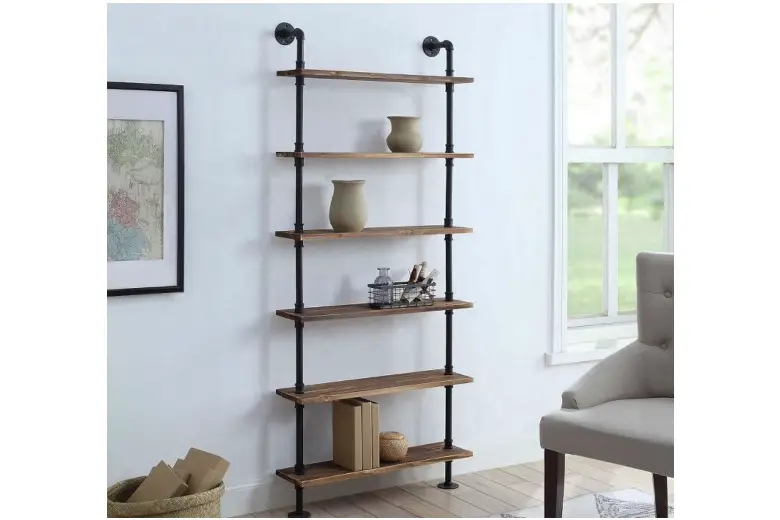
Reclaimed metal, sometimes referred to as “scrap” metal, is a term used for recyclable metals left over from product manufacturing, such as vehicles or building supplies. By using such materials in the home, consumers are reducing waste, lowering their carbon footprint, and supporting a circular economy. From a design point of view, reclaimed metal brings an edgy, industrial look to your home interiors that’s easy to clean and maintain. For shelving, consider trying out the following ideas and materials:
- Use reclaimed pipes as shelving brackets in your living room
- Build shelves into old metal lockers as storage in the bedroom
- Repurpose an iron bed frame as a shelving structure
9. Non-toxic, low-VOC finishes
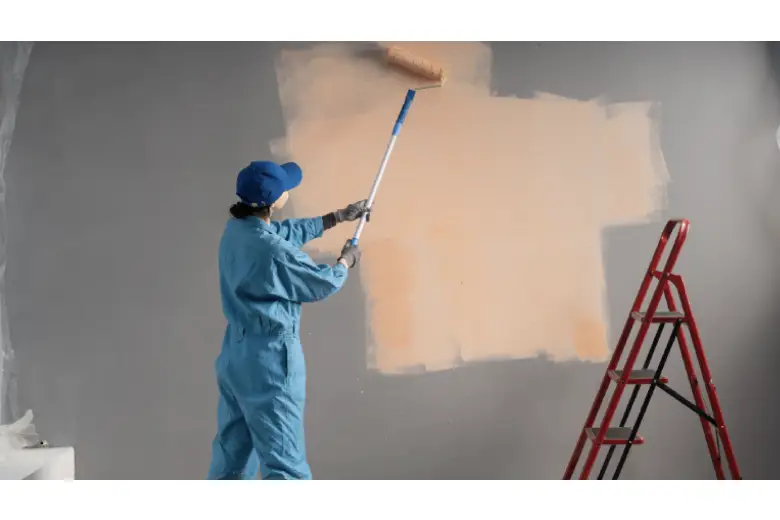
VOCs are chemical compounds often found in items such as paint and wood finishes. Although they can reduce drying times and help with application, they release harmful gases into the air to the detriment of homeowners and the environment. Instead of using VOC finishes and paints, non-toxic and low-VOC options are now available, which are considerably less harmful to the planet while still being highly effective. Water-based paints and varnishes, and shellac are just two easy-to-access options that support the creation of professional-looking walls and furniture without sacrificing sustainability goals. These substances contribute to improved indoor air quality, reduced odor, and reduced ozone depletion while offering easy cleanup and maintenance, a wide range of colors and finishes, and long-lasting results.
10. Vegan leather sofa
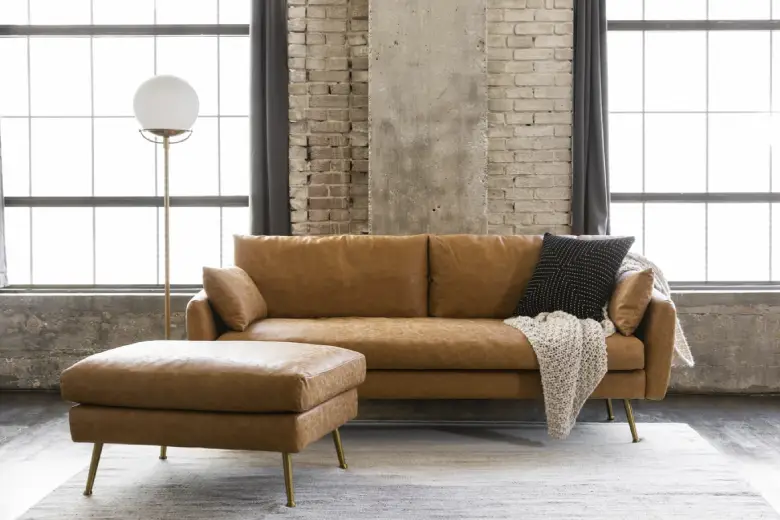
For those wanting to get the look and feel of a leather sofa but do not wish to contribute to animal exploitation, a vegan leather sofa is a cruelty-free and ethical alternative that is often just as beautiful as the real thing. The environmental impact of vegan leather is also considerably less than traditional leather production, particularly when it is made from pineapple leaves, cork, or recycled polyester. Aside from the environmental and ethical advantages, the practical benefits of using vegan leather for your sofa’s upholstery are numerous:
- It’s cheaper than real leather (by up to 70% in some cases!)
- It’s easy to clean (just wipe it down with a damp cloth!)
- It comes in a range of colors and even textures
- It’s water resistant
- It’s hypoallergenic
Whether you’re building an industrial aesthetic in your home or curating a modern-day bachelor pad, a vegan leather sofa contributes to a luxurious yet warm vibe that supports sustainable furniture producers and creates an interior design look free from the exploitation of animals or natural resources.
3 Eco-friendly furniture tips and tricks
Want to create an interior design for your home that is both stylish and environment-friendly? These are our top tips for achieving your desired look that ensures sustainability and aesthetics go hand-in-hand.
1. Buy second-hand items
If you enjoy rummaging in second-hand furniture shops or browsing vintage pieces online, buying second-hand items is a really easy way to reduce your environmental impact when buying furniture without sacrificing style or originality. In fact, pre-loved pieces aren’t just great for the environment but are often highly unique items made of higher-quality materials than their modern counterparts. Check out thrift stores, garage sales, flea markets, vintage shops, and online marketplaces like eBay and Etsy for beautiful items that need a new home. You’ll be reducing landfills and minimizing demand for new materials, in doing so supporting a sustainable, circular economy.

2. Opt for timeless designs
It can certainly be tempting to dash out and buy furniture that aligns with the latest trends, but this approach to interior design is far from sustainable. When you buy furniture only to replicate the latest fads, pieces often end up in landfill and need to be replaced as soon as the fashion changes. Instead of spending money on trendy pieces that might quickly go out of style, select classic or timeless designs that you will love for many years to come and that complement a range of different interior design styles, color palettes, and materials. It’s wise to choose furniture that’s made from durable materials, too, as these will hold up longer and stay in tip-top condition even in a busy home.
3. Choose multi-functional pieces
Multi-functional furniture is a huge trend right now, but it’s also a practical approach to sustainable interior design. By choosing items such as modular sofas and foldaway chairs or desks, you’ll find it’s much easier to redesign your home without investing in lots of new furniture pieces. Instead, you can reorganize the layout of the existing furniture to give each room a fresher feel whenever you fancy a change. This reduces your rate of consumption, minimizes landfill, and lowers your carbon footprint.
Conclusion
We hope you’ve enjoyed our selection of eco-friendly furniture options to support a sustainable approach to home interior design. If you’re thinking about redesigning your home with sustainability in mind, we’d advise you to go for classic looks that will withstand the test of time, repurpose what you can, and buy second-hand wherever possible.
Finally, before making a key purchase, we’d highly recommend doing your research into the company and its sustainability standards. Look into the materials your item has been made from, where they were sourced, how and where it was made, and the journey it has taken to the store. Armed with this information, you can make a clear-headed decision about whether or not it aligns with your own sustainability ideals before handing over your money and incorporating it into your home.
If you’d like to discover more about furniture in Interior Design, consider the following resources
- 14 Bedroom Furniture Design Ideas for 2025
- 12 Kitchen Furniture Design Ideas for 2025
- Complete Guide to Modern Furniture Design with Ideas and Trends for 2025
Next Steps
If you enjoyed this article and would like to learn more about interior design, head back to AND Academy’s blog for more articles like this one.
We also recommend you check out this project by AND Learner, Pawanjot Singh to get inspiration for your next interior design project.
In case you need further assistance, here are some resources to consider:
- Watch this session by Snehanshu Mukherjee, Founding Partner at T.E.A.M and Mansi Almadi, an Interior Designer at Studio Lotus
- Talk to a course advisor to discuss how you can transform your career with one of our courses.
- Check out our Interior Design courses - all courses are taught through live, interactive classes by industry experts.
- Take advantage of our scholarship and funding options to overcome any financial hurdle on the path of your career transformation.
Note: All information and/or data from external sources is believed to be accurate as of the date of publication.

